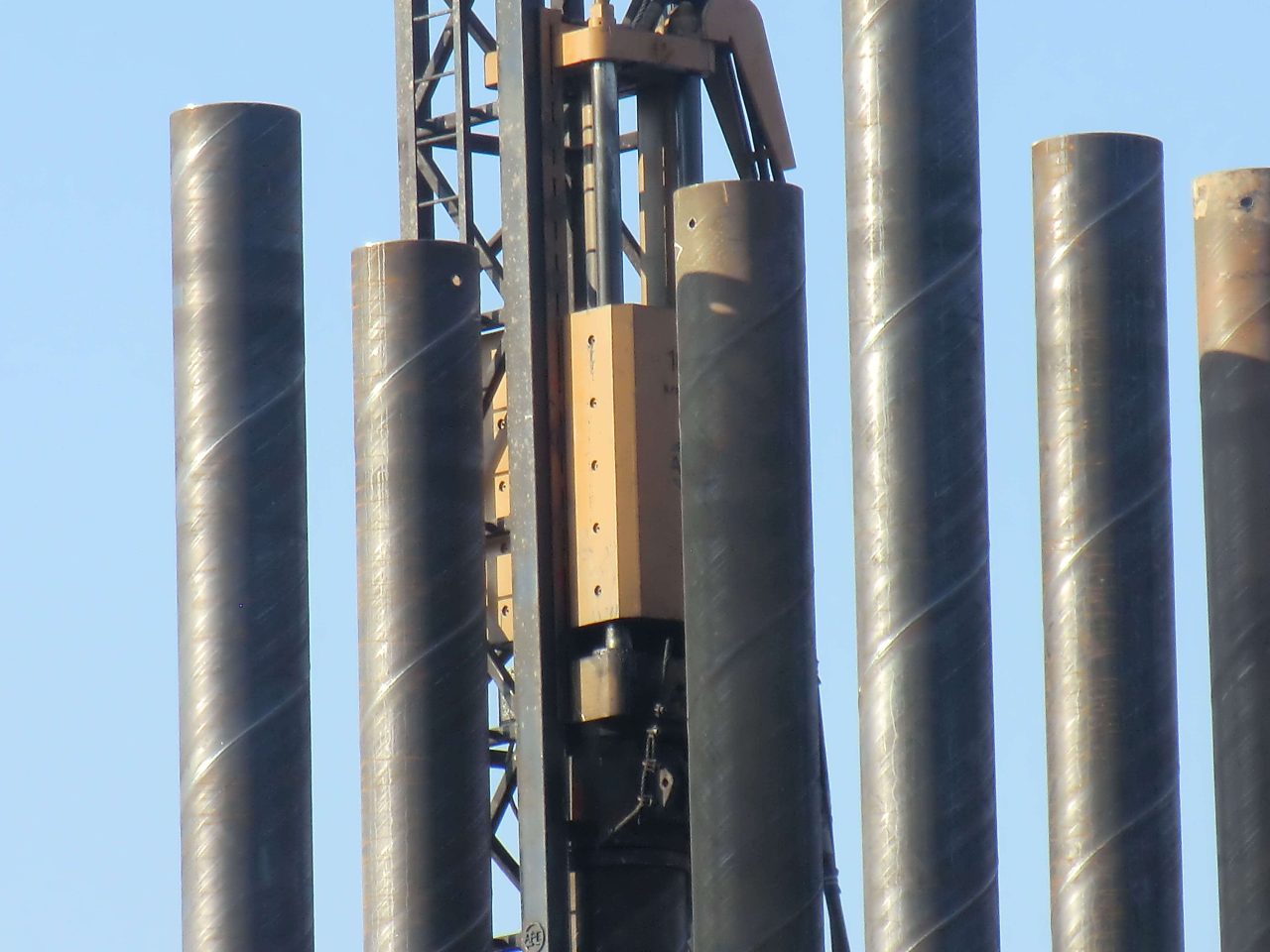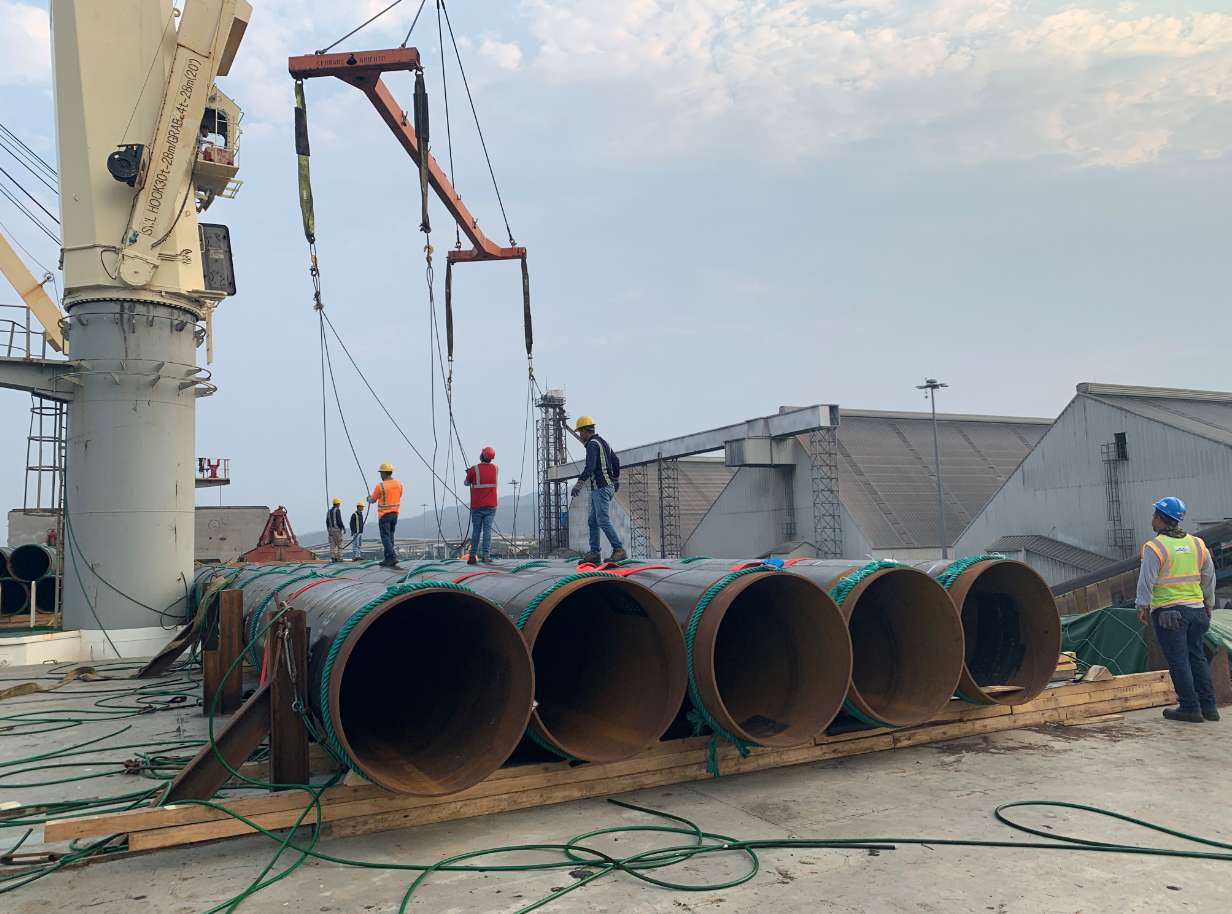Pipe Piling: Foundation Magic for Construction Mastery
Introduction
In the realm of construction, laying a solid foundation is paramount to ensuring the stability and longevity of any structure. Pipe piling has emerged as a transformative technique, offering unparalleled support and adaptability for various construction projects. This article delves into the magic of pipe piling, exploring its applications, benefits, and the reasons it has become a cornerstone of construction mastery.
Understanding Pipe Piling
What is Pipe Piling?
Pipe piling involves driving steel pipes into the ground to create a stable foundation for structures. These pipes, known as piles, are designed to transfer the load of the structure to deeper, more stable soil layers or bedrock. This technique is particularly effective in challenging soil conditions where traditional foundations may not suffice.
Types of Pipe Piling
- Open-Ended Pipe Piling: These piles allow soil to enter the pipe during installation, providing additional friction and support.
- Closed-Ended Pipe Piling: Fitted with a cap or shoe, these piles prevent soil entry, relying on end-bearing capacity for support.
- Screw Piling: Equipped with helical blades, these piles are screwed into the ground, offering enhanced stability and load-bearing capacity.
Applications of Pipe Piling
Building Foundations
Pipe piling is widely used in constructing foundations for residential, commercial, and industrial buildings. Its ability to provide deep support makes it ideal for high-rise structures and projects on unstable soil.
Bridges and Overpasses
In bridge and overpass construction, pipe piling offers the necessary support to withstand dynamic loads and environmental factors. It ensures the stability and safety of these critical infrastructure elements.
Marine Structures
Pipe piling is essential for marine structures such as docks, piers, and offshore platforms. Its resistance to corrosion and ability to withstand water currents make it a reliable choice for marine applications.
Retaining Walls
Pipe piling is used in constructing retaining walls, providing lateral support and preventing soil erosion. This application is crucial in areas with steep terrain or unstable slopes.
Benefits of Pipe Piling
Superior Load-Bearing Capacity
Pipe piling offers exceptional load-bearing capacity, making it suitable for supporting heavy structures and withstanding dynamic forces such as wind and seismic activity.
Versatility and Adaptability
The versatility of pipe piling allows it to be used in various soil conditions and environments. It can be customized to meet the specific needs of each project, ensuring optimal performance.
Quick and Efficient Installation
Pipe piling can be installed quickly and efficiently, reducing construction time and minimizing disruption to the surrounding area. This makes it a cost-effective solution for many projects.
Environmental Considerations
Pipe piling has a lower environmental impact compared to traditional foundation methods. It requires less excavation and soil displacement, preserving the natural landscape and reducing waste.
The Magic of Pipe Piling in Construction Mastery
Enhancing Structural Integrity
By providing deep and stable support, pipe piling enhances the structural integrity of buildings and infrastructure. This ensures the safety and longevity of the constructed assets.
Overcoming Challenging Conditions
Pipe piling enables construction in challenging soil conditions, such as soft clay, loose sand, or waterlogged areas. It provides a reliable foundation solution where other methods may fail.
Supporting Innovation and Growth
As construction projects become more ambitious and complex, pipe piling supports innovation and growth by offering a foundation solution that can adapt to evolving needs and technologies.
Conclusion
Pipe piling is a magical foundation technique that has revolutionized the construction industry. Its ability to provide superior support, adaptability, and efficiency makes it an essential tool for construction mastery. As the demand for robust and reliable foundations continues to grow, pipe piling will remain a key player in shaping the future of construction.
FAQ
1. What is pipe piling used for in construction?
Pipe piling is used to create stable foundations for buildings, bridges, marine structures, and retaining walls, providing deep support and load-bearing capacity.
2. What are the different types of pipe piling?
The different types include open-ended pipe piling, closed-ended pipe piling, and screw piling, each offering unique benefits and applications.
3. Why is pipe piling preferred in challenging soil conditions?
Pipe piling provides reliable support in challenging soil conditions by transferring the load to deeper, more stable layers, ensuring structural integrity.
4. How does pipe piling benefit the environment?
Pipe piling has a lower environmental impact due to reduced excavation and soil displacement, preserving the natural landscape and minimizing waste.
5. How does pipe piling support construction innovation?
Pipe piling supports construction innovation by offering a versatile and adaptable foundation solution that meets the evolving needs and technologies of modern projects.
Related Posts
ASTM A252 Pipe Pile
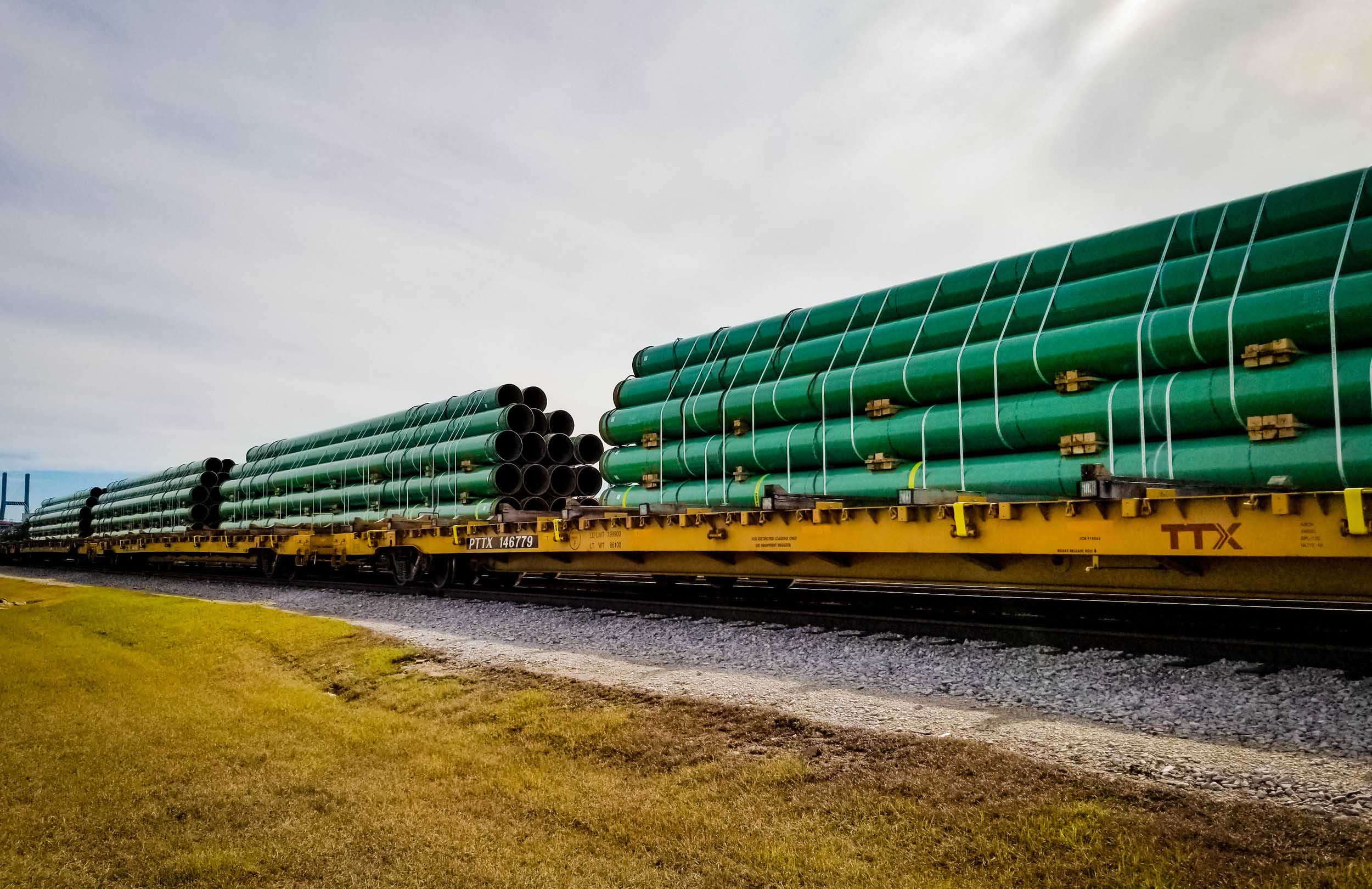
WELDED Steel Pipe Piles (ERW ,LASW, DSAW ,SSAW.) The two most common methods for steel pipe welding are straight seam or spiral seam welding. Welded steel pipes are typically used to transport fluid (water or oil) and natural gas. It is typically less expensive than seamless steel pipe. Both types of welding are applied after the pipe has been rolled, which involves shaping a sheet of steel into the end shape. Straight Seam: Straight seam welded steel pipes are manufactured by adding a welding parallel to the pipe seam. The process is fairly straightforward: Straight seam pipes are formed when a sheet of steel is bent and formed into a pipe shape, then welded longitudinally. Straight seam pipes can be submerged arc welded (SAW) or double-submerged arc welded (DSAW). Spiral Seam: Spiral seam welded pipes are manufactured when hot-rolled strip steel is formed into a pipe through spiral bending and welded along the then spiraled seam of the pipe. This results in the weld length being 30-100% longer than that of a straight seam welded pipe. This method is more commonly used on large diameter pipe. (Note: this method of welding may also be referred to as helical submerged arc Read more
SSAW Pipe Pile | Spiral Weld Steel Pipe Pilings
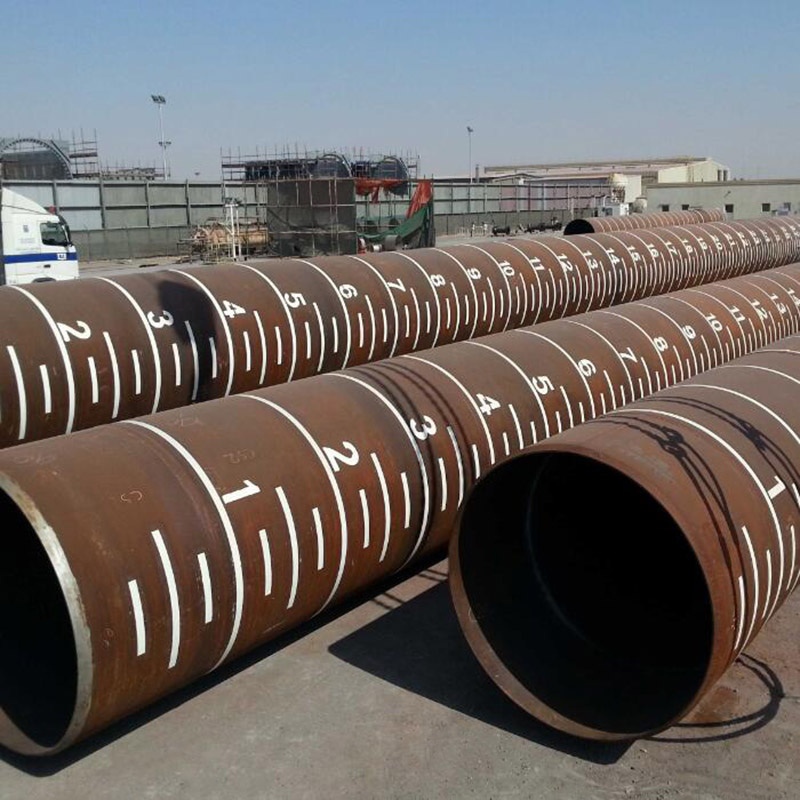
Spiral weld pipe pile, otherwise known as SSAW Pipe pile, is a type of pipe piling product used in the construction of deep foundations. It is made from steel that has been formed into a spiral shape and welded together. It is used in a variety of applications, including bridge foundations, retaining walls, deep foundations for buildings, dams, and other large structures. Spiral weld pipe pile is a high-strength, low-alloy steel pipe made from a combination of rolled steel plates and helically wound steel strips. It is highly resistant to corrosion and has a high strength-to-weight ratio, making it an ideal choice for deep foundations and other high-load applications. The process of creating spiral weld pipe pile begins with hot-rolling a steel plate into a coil. This coil is then fed into a machine which shapes it into a spiral shape. This spiral is then cut into sections and welded together to form a single pipe pile. After the welding is complete, the pipe pile is then heat treated and tested to ensure it meets the desired specifications. Spiral weld pipe pile is a strong and reliable choice for any deep foundation or other high-load application. It is resistant to Read more
pipe piles | tubular piles Steel grades materials
Benefits of Pipe Trusses The use of pipe trusses in construction offers several notable advantages: Strength and Load-bearing Capacity: Pipe trusses are renowned for their high strength-to-weight ratio. The interconnected pipes distribute loads evenly, resulting in a sturdy and reliable structure. This allows for the construction of large spans without the need for excessive support columns or beams.
What is the Standard of Fluid conveying seamless pipes and applications?
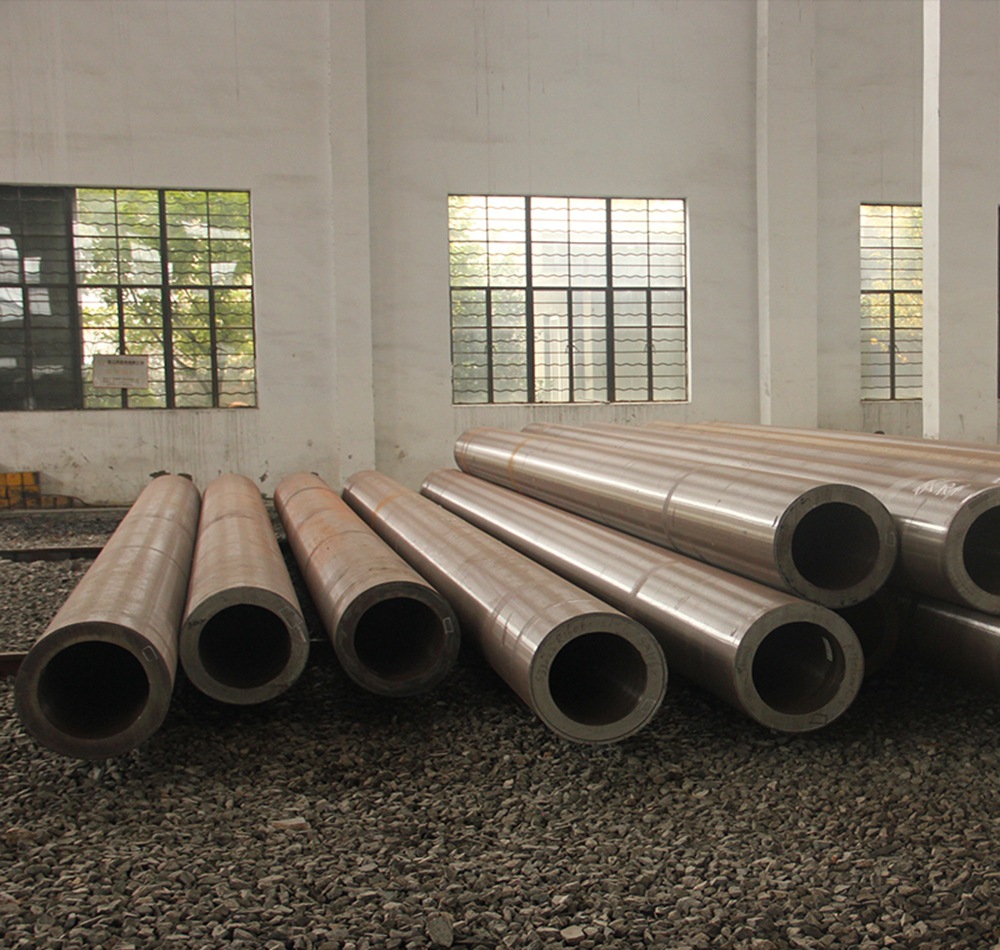
The standard for fluid-conveying seamless pipes depends on the country or region you are in, as well as the specific application. However, some widely used international standards for fluid-conveying seamless pipes are: ASTM A106: This is a standard specification for seamless carbon steel pipes for high-temperature service in the United States. It is commonly used in power plants, refineries, and other industrial applications where high temperatures and pressures are present. It covers pipes in grades A, B, and C, with varying mechanical properties depending on the grade. API 5L: This is a standard specification for line pipes used in the oil and gas industry. It covers seamless and welded steel pipes for pipeline transportation systems, including pipes for conveying gas, water, and oil. API 5L pipes are available in various grades, such as X42, X52, X60, and X65, depending on the material properties and application requirements. ASTM A53: This is a standard specification for seamless and welded black and hot-dipped galvanized steel pipes used in various industries, including fluid-conveying applications. It covers pipes in two grades, A and B, with different mechanical properties and intended uses. DIN 2448 / EN 10216: These are European standards for seamless steel pipes used in fluid-conveying applications, including water, gas, and other fluids. Read more
What are the most common types of corrosion that fluid-conveying seamless pipes are designed to resist?
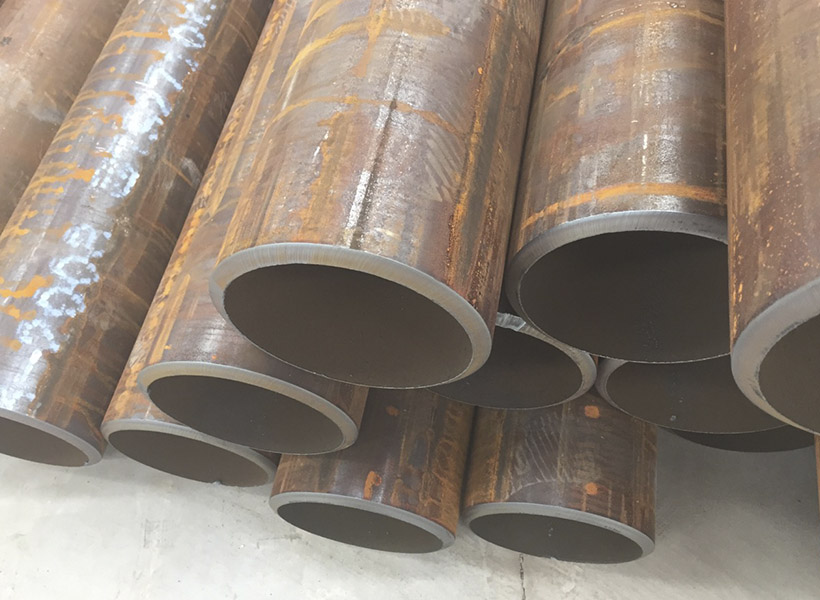
Fluid-conveying seamless pipes are designed to resist various types of corrosion depending on the material used and the specific application. Some of the most common types of corrosion that these pipes are designed to resist include: Uniform corrosion: This is the most common type of corrosion, where the entire surface of the pipe corrodes uniformly. To resist this type of corrosion, pipes are often made of corrosion-resistant materials, such as stainless steel or lined with protective coatings. Galvanic corrosion: This occurs when two dissimilar metals are in contact with each other in the presence of an electrolyte, leading to the corrosion of the more active metal. To prevent galvanic corrosion, pipes can be made of similar metals, or they can be isolated from each other using insulating materials or coatings. Pitting corrosion: Pitting is a localized form of corrosion that occurs when small areas on the pipe's surface become more susceptible to attack, leading to the formation of small pits. This type of corrosion can be prevented by using materials with high pitting resistance, such as stainless steel alloys with added molybdenum, or by applying protective coatings. Crevice corrosion: Crevice corrosion occurs in narrow spaces or gaps between two surfaces, such Read more



